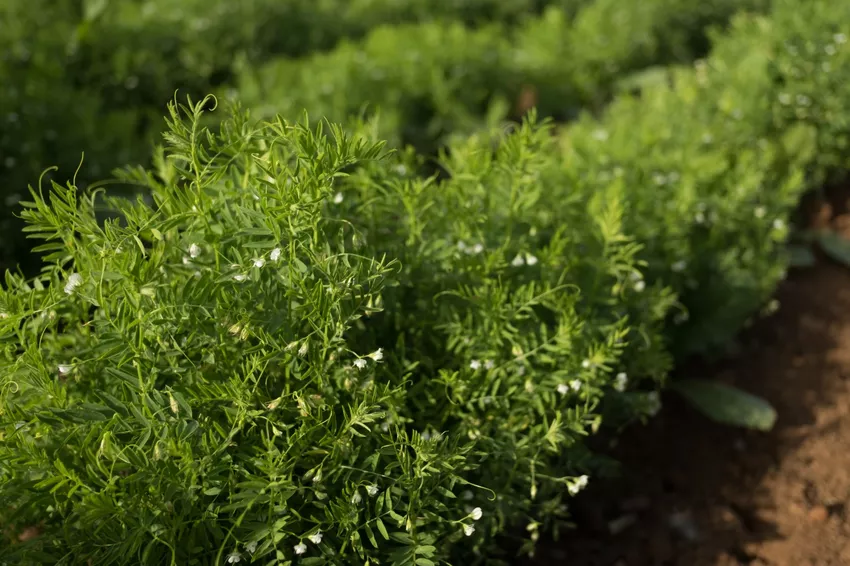The lentil is one of the oldest cultivated plants. We report on their triumph and almost forgotten knowledge from cultivation to harvest in their own garden.

The lens (Lens culinaris Medicus) once began its journey to Europe from the southeast of Turkey, today's border area with Syria and Iraq. As a nutritious and at the same time gratefully cultivated culture, it quickly became highly valued and anchored itself in our traditional cookbooks, for example as a Westphalian stew or the Swabian lentils with spaetzle dish.
By the early 1950s, however, the lens had almost completely disappeared from our fields and gardens. Inexpensive imports from abroad drove them out. The result: the loss of native varieties. As in a criminal case, around 2006 a lens-loving detective went in search of the missing varieties. He found what he was looking for in a gene bank in Saint Petersburg in Russia. Since then, lentil cultivation in Germany has experienced tailwind and the small, versatile legume has regained its place.
Grow Lentils
On the day of James and Philip (May 3rd), the farmer carries the lentils to the field.
Today, thanks cold-resistant varieties, no longer keep gardeners. Still, the lens loves warm and dry conditions. From the end of March it can be sown in a finely crumbled seed bed. The planting depth should be max. 3 cm, the distance in the row approx. 8 cm and between the rows approx. 15 cm. When choosing a location, it is important not to choose soil that is endangered by waterlogging. However, their low nutrient requirements allow you to choose locations that are otherwise less productive.

As an annual, herbaceous plant with a dainty shape, the lentil grows (semi) erect or sprawling and is between 15 cm and 75 cm high. Similar to beans, the lentil is not a stable culture and needs support and tendrils. In the home garden, a fence system (mesh wire fence 20 x 20 mm) has proven itself, on which the lens can find a hold. Additional stability can be provided by astring stretched between the rows of lenses can be reached. The lens can support itself with its tendrils. Another alternative is to grow the lentil in a mixture with another plant. Mixtures of lentils with peas or buckwheat are possible. However, patience is required when harvesting and separating the mixture!

Lentil varieties: The colorful variety
Rich in proteins, minerals and vitamins, the lentil is particularly valuable for vegetarian or vegan diets. Whether red, black, yellow, green, brown, marbled, large or small, flat or round, the variety of lenses seems immeasurable. Two of the lost and rediscovered varieties from southern Germany are the small and the large Späths Alblinse. The two light green varieties are adapted to the weather conditions in Central Europe and are very promising.

While the small Späths Ablinse is suitable for lentil salads due to its aromatic taste, the large Alblinsen is convincing when processed into soup dishes. A color contrast to both is the little black one, a small-seeded lentil from Switzerland. A red dal dish, for example, can be conjured up from the originally French variety Rosana. The French DuPuy lens, a green-blue marbled lens, is also very popular. Your cultivation is also possible with us.
Diseases and Pests
The lentil is easy to care for and is grown according to the 3-G method: Sow, Look, Harvest. Disease treatment and/or pest control is not necessary.

If the leaves turn red-violet, which in the worst case can lead to the entire plant dying off, there may be an infestation with anthracnose (Colletotrichum truncatum) . Curative measures against the fungal disease are not possible. As a preventative measure, it should be ensured that no beans, peas or other legumes have been grown in the same bed for at least 3 years. These provide a medium for the fungus to survive.

Be careful with gardens near the forest or with free-ranging rabbits. The little lentil plants are a treat for the animals! Next, the black bean aphid (Aphis fabae) and thegreen pea aphid (Acyrthosiphon pisum) cause feeding damage to the leaves.
Harvesting and storing lentils
The lentils are ready to harvest as soon as the pods "rattle or rattle". Then the seeds have the necessary degree of ripeness or a grain moisture content of <20 %. Die Pflanzen werden zur Ernte bodennah mit einer Gartenschere abgeschnitten. Anschließend empfiehlt es sich, die Pflanzen in einen Jutesack oder ähnlich atmungsaktiven Sack zu geben und die Hülsen darin vorsichtig durch Abklopfen des Sacks auszudreschen. Durch Sieben und einen Luftstrom (Föhnen) kann das Erntegut vom Stroh getrennt werden. Durchschnittlich befinden sich in jeder Hülse 2 Samen.

In order to be able to store the lenses for a longer period of time, it is advisable to dry them afterwards. To do this, lentil seeds are spread over a large area and dried in a dry and warm location.
Use of the lens in the kitchen:
